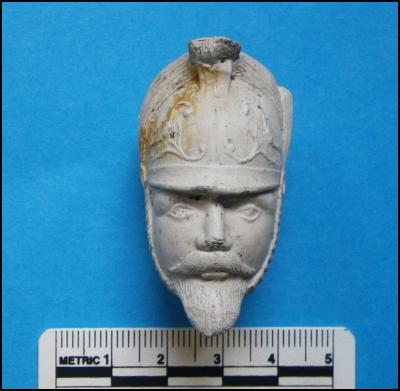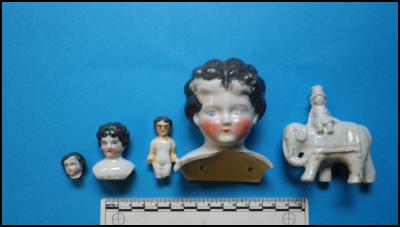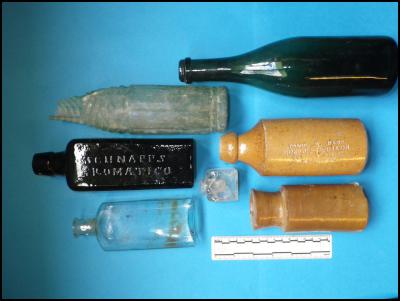China heads among Victoria Street finds
2 July 2015
China heads among Victoria Street finds

A glass inkwell, several porcelain dolls’ heads, a china elephant with a little girl riding on top and an early ginger beer bottle are among the things discovered in old wells during the Victoria Street transformation work.
Another unusual find is the intact, head-shaped bowl of an old clay smoking pipe depicting a bearded man in a cavalry helmet.
Though most of the upgrade work was close to the surface, four wells were discovered as construction workers installed 9000 metres of new ducting pipes for existing and future underground services, and dug the pits for the 55 new trees that now line both sides of the street.
Archaeologist Sarah Phear from Clough and Associates, who has begun assessing the finds, says the well that revealed the most interesting artefacts was in an area of Te Aro where several schoolrooms were located from the 1850s. These included St Peter’s Schoolroom and the Te Aro Infants’ School near the Ghuznee Street corner.

“These school buildings could explain the collection of little china dolls’ heads that were found,” she says. “Though we think the larger head might once have been attached to the top of a tea cosy and others are likely to have been from ornaments or figurines, so they could also have been discarded items from people’s homes.”
“It’s common to find plain pipes and bowls but unusual to find one like this. We believe the person wearing the helmet is likely to have been a particular person and are doing more research to find out more about it.”
The parts of Victoria Street that have been upgraded were busy residential areas in the 19th century and first few decades of the 20th century and early on most people had their own wells. As these fell into disuse, they were often gradually filled with rubbish.

An archaeological assessment was carried out last year before the Victoria Street transformation project began so workers were aware of the areas where finds were most likely to be unearthed and what to watch for. An archaeologist also kept an eye on the excavation work as it progressed.
Only the parts of the well affected by the work were excavated. The lower layers have been left intact.
ends


 Gordon Campbell: On The Left’s Electability Crisis, And The Abundance Ecotopia
Gordon Campbell: On The Left’s Electability Crisis, And The Abundance Ecotopia NZDF: Battlefield Remains Unearthed By Wildfires In Gallipoli Covered Over By Kiwi Team
NZDF: Battlefield Remains Unearthed By Wildfires In Gallipoli Covered Over By Kiwi Team NZ Police: New Zealand Police team up with Z Energy, NZTA and ACC to remind Kiwis to drive safe this Easter
NZ Police: New Zealand Police team up with Z Energy, NZTA and ACC to remind Kiwis to drive safe this Easter NZCAST: NZCAST Leads Ongoing Cross-Agency Collaboration To Break Down Barriers For Survivors Of State Abuse
NZCAST: NZCAST Leads Ongoing Cross-Agency Collaboration To Break Down Barriers For Survivors Of State Abuse Regional and Unitary Councils Aotearoa: Regional And Unitary Councils Back A Practical FWFP System
Regional and Unitary Councils Aotearoa: Regional And Unitary Councils Back A Practical FWFP System NZ Government: Stay Safe On Our Roads This Easter
NZ Government: Stay Safe On Our Roads This Easter YWCA: Global Push Back Against Gender Equality A Growing Crisis In Aotearoa
YWCA: Global Push Back Against Gender Equality A Growing Crisis In Aotearoa


